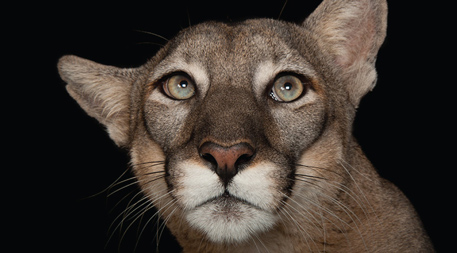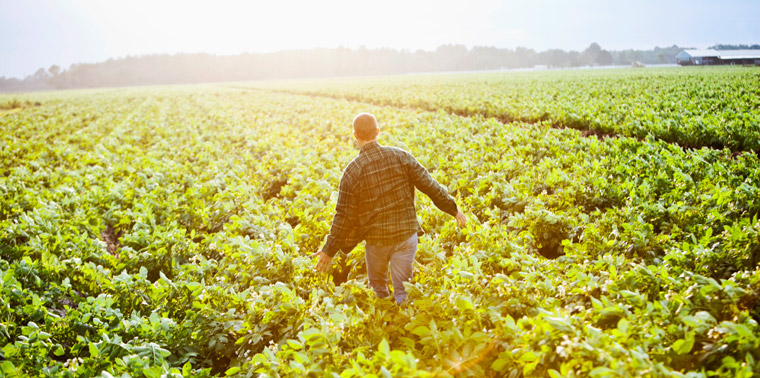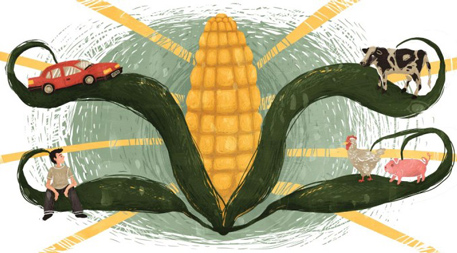December 30, 2013 — What do palm oil, tornadoes, America’s corn belt, the death of sustainability, food waste, pregnancy advice and a somber sounding cello have in common? They all made the list of Ensia’s top read stories in 2013.
The most popular piece — “Changing the Global Food Narrative” — challenged the widely held assumption that the only way to feed a growing population is to double food production by 2050 through genetically modified crops and other advanced technologies. The commentary struck a chord with readers and was republished by Quartz, Thomson Reuters, Sustainable Industries and others.
Some of the other top stories explored a new path forward for conservation, why it’s time to kill off the entire language of sustainability and 10 things the next generation will need to thrive in the decades ahead.
Without further ado, here are the top 10 most read Ensia stories of 2013 along with a few bonus picks by the editors.
1: Changing the Global Food Narrative
The most popular story on Ensia in 2013 showed why the dominant narrative about the future of the world food supply is logical, well known and wrong.
An essay from science writer Maggie Koerth-Baker exploring how cultural norms and expectations play a dramatic role in the havoc wreaked by natural disasters kicked up a lot of conversation back in July, just a couple months after a mile-wide tornado ripped through Moore, Okla.
3: It’s Time to Rethink America’s Corn System
“As a crop, corn is highly productive, flexible and successful. As a system, the same is not true.” Back in March, those words sparked a serious debate that continued for the rest of the year when this essay about America’s corn system was published at both Ensia and Scientific American.
If climate change had a theme song it might sound something like “A Song of Our Warming Planet.” This Ensia video showed climate data in a new way: by playing it on cello. The fresh approach to science communication resonated with viewers: The video appeared across the Web on Andy Revkin’s Dot Earth, Slate, Scientific American, Huffington Post and many more sites. Heck, even Al Gore tweeted a mention of the video.
The cover story of our summer print issue was one of our most popular features of 2013. In it, journalist Hillary Rosner explored how conservationists are wrestling with a fundamental question about their task: not why we should save nature, but what exactly we should save and how we should save it.
Personal essays didn’t show up often on Ensia in 2013, but this one from journalist Hillary Rosner about how a deluge of prenatal advice offered her unexpected insights into climate denial really struck a chord with readers.
“Sustainability is dead. Or at least the entire language we use to talk about it should be buried.” With these words, China-based Peggy Liu, founder of JUCCCE, kicked off one of Ensia’s first — and most popular — commentaries of the year.
Looking for margarine, peanut butter, crackers, cookies, ice cream, lipstick, toothpaste, soap, candy, etc. that isn’t made with unsustainable palm oil? Good luck with that.
The end of the year is always a good time to look forward — and that’s exactly what we did when we published “Teach Your Children” in July. The feature, written by Minda Berbeco, the programs and policy director at the National Center for Science Education, included 10 things the next generation will need to know to thrive in the Anthropocene.
10: The Rotten World of Food Waste
“1.3 billion tonnes of food are lost or wasted on average each year.” Not only was this our most popular infographic of the year, it was also Ensia’s most shared story/graphic with over 1,000 retweets alone.
Bonus
It just wouldn’t be a top 10 list without at least one cute animal photo. So here’s a shot from one of the most popular photo galleries from 2013 — “Photo Ark: Shining a Light on Threatened Species” — along with some of our personal favorites from the past year.

A Florida panther (Puma concolor coryi) at the Lowry Park Zoo. Florida panthers are found in small pockets in southern Florida, in mixed swamps and hammock forests. They are considered critically endangered, with an estimated population of 20–50 animals. Photo by Joel Sartore
“‘Seven Wonders of a Hopeful World’ epitomizes the spirit of possibility that we try to weave through all of Ensia’s stories.” – Mary Hoff, editor in chief
“Blending pop culture (by way of the foodie movement) and solutions for adapting to climate change in a captivating way, ‘Climate Change Cuisine?’ by science journalist Virginia Gewin is just a great read.” – David Doody, senior editor
“‘The Wild Ones’ is one of the most stunning collections of bee photographs I’ve ever seen and highlights a critical issue.’ – Sarah Karnas, creative director
“Knowing that a record number of rhinos have been killed in South Africa this year, the solutions presented in ‘The Race to Save Rhinos’ by Adam Welz seem more urgent than ever.” – Todd Reubold, director ![]()
Ensia shares solutions-focused stories free of charge through our online magazine and partner media. That means audiences around the world have ready access to stories that can — and do — help them shape a better future. If you value our work, please show your support today.
Yes, I'll support Ensia!


